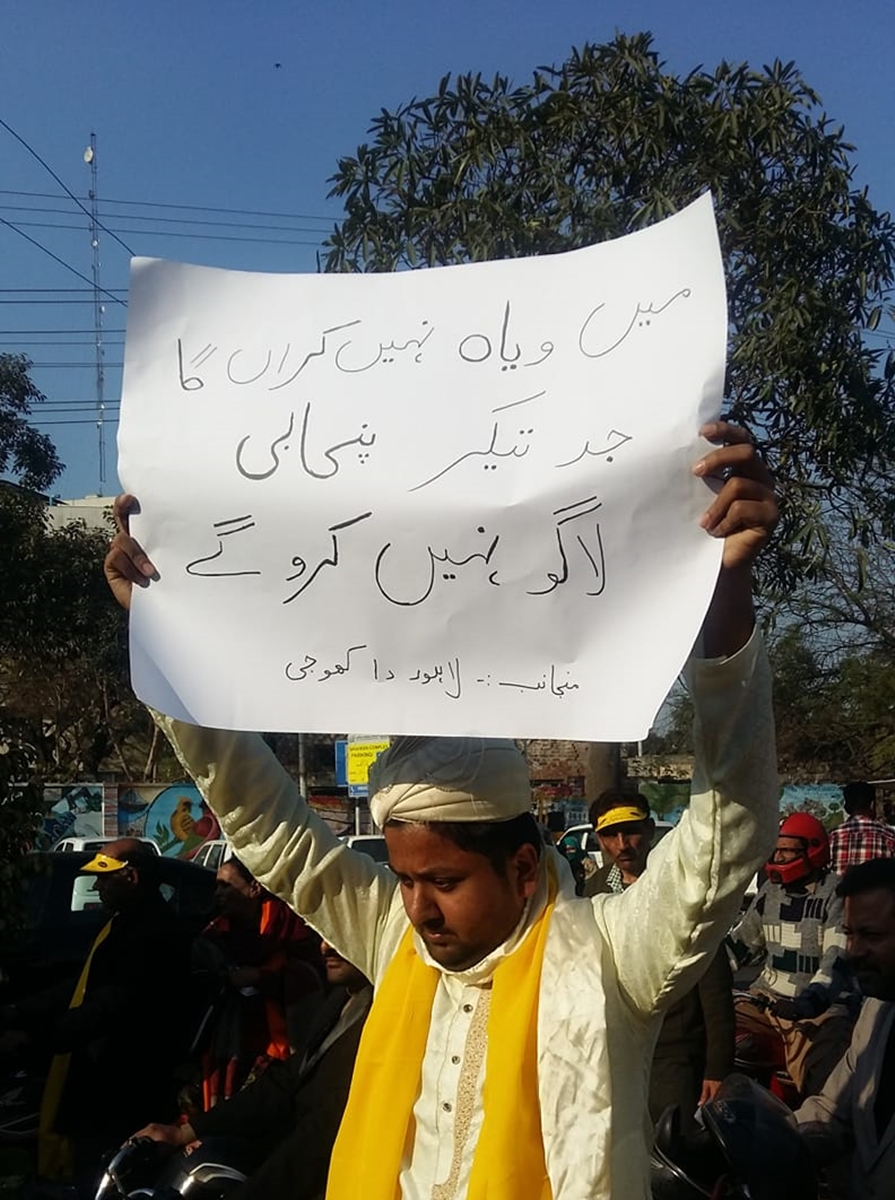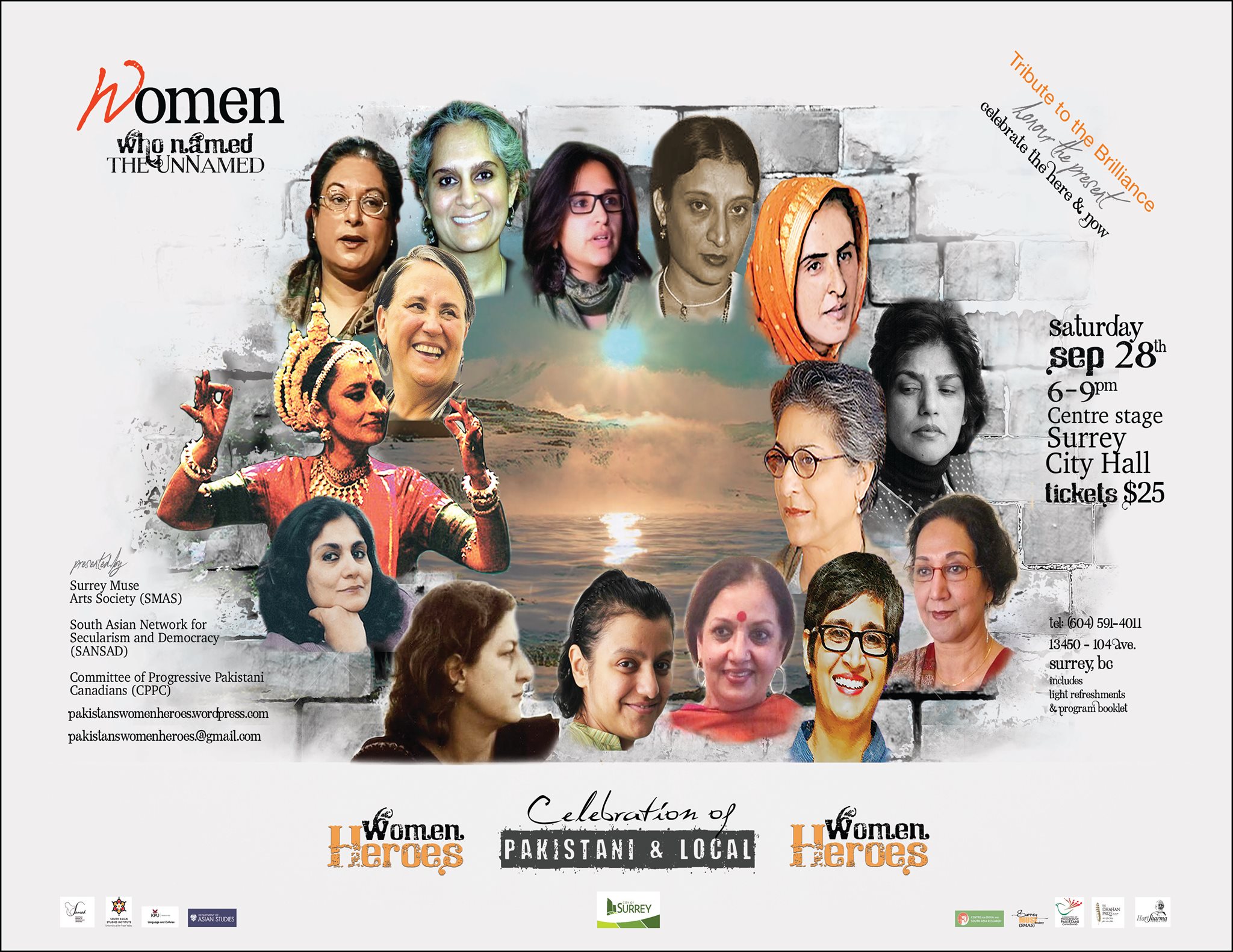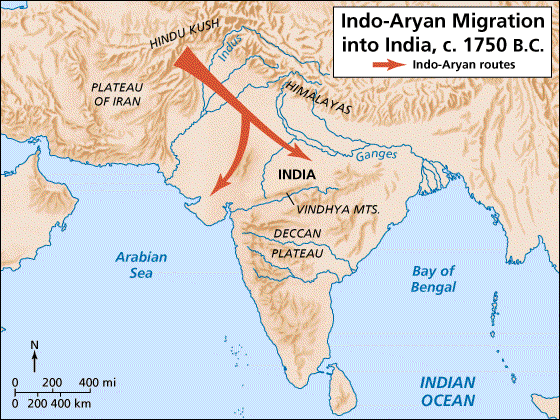
پنجابی دنیا دے ہر کونے چ وسدے نیں،125 ملین دی نفری، اسیں ایس ویلے دنیا چ آبادی دا ستواں وڈا گروپ آں تےہر تھاں اسیں اپنی ماں بولی نال اک دو بھین بولیاں وی ورتنے آں۔ جیویں پاکستان وچ پنجابی (صوبائی ) ساڈی ماں بولی اے، اردو (قومی ) تے انگریزی (سرکاری ) ساڈیاں بھین بولیاں نیں۔ ہر کسے دی اپنی رہتل پاروں ساڈی ماں بولی وچ بھین بولیاں تے بھین بولیاں وچ ماں بولی دے اکھر شامل نیں۔ پنجاب وچ اک پاسے ماں بولی وچ عربی، اردو، فارسی تے انگریزی دے اکھر نیں تے دوجے پاسے سنسکرت، انگریزی تے ہندی دے۔ دوواں پاسے پنجاب دے کجھ لکھاری اردو، ہندی یا انگریزی وچ وی لکھدے نیں۔
پنجاب توں باہر رہندے پنجابیاں دیاں کجھ بھین بولیاں اوہناں دیساں دے لوکاں دیاں ماں بولیاں نیں، تےکجھ نہیں۔ جیویں جرمنی وچ جرمن مقامی لوکاں دی ماں بولی اے، پر کینیڈا وچ انگریزی تے فرانسیسی دوویں مقامی لوکاں دیاں ماں بولیاں نہیں، یورپی سامراجیاں دیاں ماں بولیاں نیں جیہڑیاں اوہناں ایتھے آ لاگو کیتیاں، جیویں پنجاب وچ انگریزی لاگو کیتی گی۔
ایس ویلے شہری پنجاب دے اندر باہر اکثر پنجابیاں دا روٹی ٹکر بھین بولیاں نال جڑیا ہویا اے، اُتوں پنجاب وچ وی پنجابی نوں اوہ درجہ نہیں دتا گیا جو اوہنوں ساڈی ماں بولی کر کے ملنا چاہیدا اے، ایتھے ہن وی سارے درجے اردو/ ہندی تے انگریزی کول نیں۔ ایس ماحول وچ ساڈے کول کیہ چوائس اے؟
ہر کسے دی بولی اوس انسان دی اُٹھان توں اُسردی اے تے اوہدی ذاتی تواریخ دا حصہ بندی جاندی اے۔ میں ایتھے ماں بولی دے اوس پروسیس بارے گل کرنا چاہنی آں جیہدے وچوں اسیں چھوٹیوں لا اکٹھے، تے وکھو وکھ، لنگھنے آں۔ میں ہڈ بیتی راہیں دسنی آں، پنجاب وچ اک بالڑی ہوندیاں ماں بولی پکھوں میرے نال کیہ واپری، تےہن پنجاب دی اک لکھاری ہوندیاں میں اپنی ماں بولی تے بھین بولیاں وچ چون پڑتال کیویں کرنی آں، تے کیوں کرنی آں۔
میں تے میری ماں بولی
مڈھلے ورھیاں میری حیاتی وچ میری ماں بولی دا راج سی۔ اسیں پتوکی دے کول پنجاہ سٹھ گھراں دے اِک پنڈ وچ رہنے ساں، ساڈے گھر اندر باہر سارے پنجابی بولدے سن۔ الف، ب میں دوجے بالاں نال گھر دے ویڑھے اپنی ماں توں سکھی، پچھوں اِک اسیں قاعدہ شروع کیتا اردو دا تے فیر اک عربی دا۔ میری وڈی بھین تے بھرا لاہور انگریزی سکولاں وچ پڑھدے سن، اوہناں مینوں اے۔بی۔سی سکھائی۔ ساڈے گھر ریڈیو سی، جیہڑا بہتا خبراں سنن لئی ورتیا جاندا، اوہدے تے لاہور، بی بی سی تے آل انڈیا ریڈیو لگیا ہوندا ۔ لاہور ریڈیو تے پنجابی لوک گیت، اردو نعتاں، تے دوواں بولیاں دے ڈرامے وی لگدے۔
تسیں نوٹ کیتا ہونا اے، مڈھلی تعلیم وچ مینوں اردو، عربی تے انگریزی پڑھائی گئی، پنجابی نہیں۔ اوس ویلے اوس تھاں پنجابی کلچر چوکھا مضبوط سی، ایس لئی اوہدے نہ پڑھائے جان نال بھاویں سانوں فرق نہیں پیا کیوں جے پنجابی دے درس سانوں ساڈی رہتل دیندی سی۔ پنڈ وچ میری ماں توں اَڈ اِک دو ہور زنانیاں پنجابی پڑھنا جاندیاں سن، لالٹین دی روشنی وچ میں اماں جیواں دی جُھگی بیٹھ کے یوسف زلیخا، سوہنی مہینوال،سسی پنوں تے سہتی مراد دے قصے سُندی۔ میری ماں کول بُلھے شاہ، بابا فرید، سلطان باہو، شاہ حسین دے کلام سن جیہڑے اسیں اوہدے توں وی سُندےتے ریڈیو تے گلوکاراں توں وی۔ گِدھے چن راتاں نوں کھیڈے جاندے ڈانس ڈرامے سن۔ موسمی تہوار، عیداں شبراتاں، منگنیاں ویاہ، پورے چن دیاں راتاں، اسیں پنجابی لوک گیت تےٹپے گاندے، سُناندے ، نویں بناندے، گِدھے پاندے، تے نچدے۔
اتے اخیرلا جملہ کجھ ٹھیک نہیں۔ سچ ایہہ اے: ’’اسیں پنجابی لوک گیت ٹپے گاندیاں، سُناندیاں، نویں بناندیاں، گِدھے پاندیاں، تےنچدیاں‘‘۔ لگدا اے، میرے پنڈ سارے فن زنانیاں ہتھیں سن تے اوہو اوہناں وچ وادھا پاندیاں سن۔ مرد گاندے وجاندے ویکھے جدوں کدی سپیرے آندے، بین وجاندے، ڈگڈگی تے ڈھول دی لے تے باندر نچاندے، رِچھ دا تماشا کردے۔ کوئی وڈی گل ہوندی تے کھسریاں دی پارٹی آندی، تے اوہ جگتاں وی لاندے، نچدے گاندے وی۔ مُنڈے تے بندے گلی ڈنڈا، کشتی تےکبڈی کھیڈدے۔ اِک ساڈے سکے آندے، اوہ بی ۔اے۔ پاس، علامہ اقبال نُو ں اُچا جاندے تے اوہناں دیاں نظماں زبانی سُناندے۔ اِک انگریزی دی کتاب توں ویکھ ویکھ کجھ لِکھدے رہندے، پتا لگا اک شیکسپئر لکھاری اے اوہدے ڈرامے اردو چ ترجمہ کردے نیں۔
راتاں نوں ’’باتاں پانا‘‘ یا اک دوجے نوں ’’جگ بیتی یاں ہڈ بیتی‘‘ سُنانا روز دا کم سی۔ اَن پڑھاں دے پنڈ وچ جیہڑی باتاں پا لیندی اوہدی واہوا ٹوہر بن جاندی۔ میں گیتاں توں پہلوں کہانی بنانی سِکھی، تے میرے کول دو سُننہار سن، دوپہراں نوں اپنے نالدے بال تے رات ویلے گھر دے وڈے۔ فرق ایہہ ہوندا، بالاں نوں نِکی کہانی سُناندی تے اوہدے وچ بولن والے طوطےتے جن بھوت وی ہوندے، وڈیاں نوں لمی کر کے سُناندی پر اوہدے وچ طلسماتی چیزاں نہ ہوندیاں، بھاویں میرا خیال سی اصلی کہانی لمبی تے غیر طلسماتی ہوندی اے۔چھیتی ہی میرے گھر آلے کہانی ویلے میتھوں کَنی کتراون لگ پئے۔ اک دن میرے بھرا نے کہیا، اج میں تیری کہانی اخیر تک سُننی اے۔ ادھی رات ہو گئی، نہ کہانی مکے تے نہ ای مینوں نیندر آوے پر میرے بھرا نوں ہار مننی پئی۔
میری کہانی کدی نہیں سی مکنی، اوہ میں وڈیاں کولوں سنی اک کہانی ’چڑی آئی تے دانا لے گئی‘ دی تکنیک تے بنائی سی، جیہدا مقصد بال نوں بور کر کے سوں جاون تے مجبور کرنا ہوندا اے۔ جیویں اِک اِک کر کے چڑی گودام وچوں کنک دے سارے دانے نہیں لے جا سکدی سی، اوویں میری کہانی وچ انسانی نسل نہیں مک سکدی سی۔ اِک بادشاہ تے اوہدے ٹبر دی کہانی جیہڑی شروع ہوندی تے بادشاہ، ملکہ ، شہزادے، شہزادیاں ’دُھپے منجی ڈاہ کے‘ بیٹھے کدی گنے چوپدے ہوندے کدی امب، کدی مالٹے کھاندے کدی امرود، کدی جموں تے کدی توت۔ اخیر ہمیش بھیڑی ہوندی، کوئی نہ کوئی آفات آندی، زلزلا، ہڑ، جنگ، بغاوت، تاپ، چیچک، سارے مر کھپ جاندے بس اِک ولی عہد بچدا، اوہ وڈا ہوندا…… باشاہ بن دا، تے فیر اوہ دُھپے منجی ڈاہ کے اپنی ٹبری نال ویڑھے بیٹھا پھل فروٹ کھاندا پیا ہوندا۔
سن سٹھ دی دہائی دا شروع سی، میں ست ورھے دی ساں جد میرا ٹبر لاہور آ وسیا، میں اک گورنمنٹ پرائمری سکول دوجی جماعت داخل ہو گئی۔ اوتھے پہلی واری مینوں پنجابی بولن توں ہٹکیا گیا۔ سچی گل اے، اوس ویلے مینوں اردو تے پنجابی دا فرق پتا نہیں سی لگدا، میں رلی ملی زبان بولدی جس تے مینوں سکول وچ شرمندگی چانی پیندی۔ اوہناں دناں میرے بھرا دا ویاہ ہویا، میری بھرجائی میاں چنوں وسدی ہوشیار پور دی اک فیملی توں سن تے کجھ ورھیاں توں لاہور پڑھدیاں پیاں سن۔ اردو ادب، شاعری تے میوزک وچ رُجھیاں ہوئیاں، مرزا غالب دیاں شُدیناں، آپ وی غزلاں گاندیاں۔ اوہناں گھر وچ پہلی واری میرے نال اردو بولنی شروع کیتی، تے ہولی ہولی مینوں پنجابی اردو دا فرق سمجھ آون لگا ۔
گھر دے باہر وی حال بدل چکیا سی، شہر دا کلچر ہور۔ پنڈ وچ ہر کوئی اپنا سی، شہر وچ ہر کوئی پرایا۔ گھروں باہر نکلن تے ودّھ پابندیاں ۔ انج باہر دی دنیا وچ سکول میرا گھر بن گیا۔
مینوں کہانیاں سُنان توں پہلے سُنن دا شوق سی، سکول دی لائبریری بچیاں دیاں کہانیاں دیاں اردو کتاباں ہوندیاں، کجھ گھر دے رستے وچ کھوکھے توں وی مل جاندیاں، نال دو تن رسالے ’بچوں کی دنیا‘، ’کھلونا ‘تے ’تعلیم و تربیت‘ وی ہوندے۔ میں اپنا جیب خرچ ایتھے لاندی ساں۔ چنگے نمبر لینے تے کدی میرا بھرا خوش ہو کے مینوں فیروز سنز لے جاندا ۔ پنجویں جماعتے میرے کول بچیاں دیاں کہانیاں دیاں سینکڑے کتاباں تے رسالے سن، کجھ انگریزی تے باقی ساریاں اردو، پنجابی دی اک وی نہیں۔ ایہہ سٹھ دی دُہائی دی گل اے، اوس ویلے مینوں بچیاں دیاں پنجابی کتاباں تے رسالے کدھرے نظر نہ آوندے، نہ سکول دی لائبریری وچ، نہ کھوکھے تے، نہ فیروز سنز۔
ہائی سکول پہنچدیاں مینوں لگیا جیویں حیاتی وچ اگےودھن لئی مینوں اردو تے انگریزی، صوفیانہ شاعری راہیں روحانی ترقی لئی پنجابی، تے دینی تعلیم لئی عربی پڑھن دی لوڑ اے۔ یاں ا یویں آکھو، پنجابی صوفیانہ شاعری دی بولی اے، عربی قرآن دی، اردو تے انگریزی دنیا وچ اپنا مقام بنان دی۔ ایہدے وچ میری اپنی کوئی سوچ یا سمجھ نہیں سی، ایہہ میرے ماحول تے میری ضرورت مینوں دسیا۔
ایہناں چار وچوں تن بولیاں میں ہن تائيں ورتنی آں۔ کہانیاں بنانیاں میں پنجابی وچ شروع کیتیاں، مضمون لکھنے اردو وچ، تے خبراں لکھنیاں انگریزی چ۔ پہلا ٹی وی ڈرامہ سیریل اک اردو ناول توں اخذ کر کے اردو چ لکھیا’دستک نہ دو‘، تے دوجا اک روسی ناولٹ دا انگریزی توں پنجابی ’آپے رانجھا ہوئی‘۔ پہلا ناول پنجابی وچ شروع کیتا1974وچ ’کیڑو‘ جیہڑا ہن 2019 وچ چھپیا۔ کینیڈا آکے کجھ کہانیاں انگریزی وچ لکھیاں، ناول ’سکینہ‘ انگریزی تے پنجابی دوواں وچ اکٹھے، تے ’ایڈونچرز آف صاحباں‘ اُکا انگریزی وچ۔ پہلی نظم ستّر دی دہائی وچ لکھی اردو، پچھوں شاعری ہوئی اے انگریزی یاں پنجابی۔
مینوں اک بولی توں دوجی تے جاندیاں کوئی پرابلم نہیں ہوندی، تے نہ ایہہ مسئلہ ہوندا اے کہ کیہڑی شے کیہڑی بولی وچ اے۔ جیہڑی شے نے جیہڑی بولی وچ آنا ہوندا اے، اوہ اوسے وچ آؤندی اے۔
فیر رولاکیہ اے؟
رولا ایہہ اے، اک تے پرائمری سکول پنجابی نہ پڑھائی گئی، اُتوں پنجابی بولنا وی سکول سسٹم دی نافرمانی تے جہالت دی نشانی سی۔ ایہدی تھاں جے سکولے پڑھائی لکھائی پنجابی وچ ہوندی، میری ماں بولی نوں پنجاب دے ہی اک شہر وچ ہینا کر کے پیش نہ کیتا جاندا تے بھاویں مینوں ہر شے سوکھی سمجھ آؤندی، میں ہور سوہنے گُن سِکھدی۔ اُتوں مارکیٹ و چ اوس ٹائم بالاں دیاں کہانیاں دیاں پنجابی کتاباں تے رسالے کوئی نہ ہون، جتھوں میرا ایہہ خیال زور پکڑ گیا کہ پنجابی صوفیانہ شاعری دی بولی اے، نویں زمانے دی نہیں۔ میں سمجھنی آں، ایہناں دو چیزاں کارن میری اُٹھان وچ اک وڈا پاڑ پیا، جنھوں میں پور نہیں سکدی۔
ایہہ پاڑ، ایہہ کھپا، ماں بولی اک مضمون وانگ نہ پڑھ سکن دا ای نہیں، اوہ تے فیر وی پوریا جا سکدا سی۔ اصل کھپا ایہہ پیا، شہر پہنچدے ای، یک دم، بنا مینوں کجھ دسے پچھے، میرا پورا کلچر ردّ کے پرانہہ سٹ دتا گیا۔ جس بولی وچ میں سوچدی ساں، کہانیاں بناندی تے ٹپے جوڑدی ساں، وڈیاں چھوٹیاں نال گل بات کردی ساں، اُٹھدی بہندی ساں، رہندی سہندی ساں، اوہ سبھ ’پینڈو‘ دا میہنا لا کے پرانہہ سٹ دتا گیا۔ مینوں لگیا، نال مینوں وی سُٹدے پئے نیں۔ پتا لگا، میرے بچن دا اِکو طریقہ سی، اپنا پینڈو سیلف لکا کے، یاں مار کے، اک شہری سیلف بنانا جیہڑا پنجابی تھاں اردو انگریزی بولے، لسّی تھاں چاہ پیوے، چاول چمچے نال کھاوے، تے امب کانٹے نال۔ ایہہ سی روز دیہاڑے ذلیل ہوون توں بچن دا طریقہ۔
مینوں روپ وٹان وچ دیر نہیں لگی کیوں جے پورا ماحول مینوں اوسے پاسے ٹوردا سی، تے فیر کیہ کہہ کے مینوں سلاہندے سن؟ ’’کنی سوہنی اردو بولدی اے، پتا ای نہیں لگدا پنجابن اے۔‘‘ سچ پچھو تے مینوں اپنا آپ، اپنا پنجابی سیلف، لکان وچ بڑا مسئلہ ہوندا سی۔ اپنی اصل کون لکا سکدا اے، ’میری بکل دے وچ چور……!‘ اُتوں بال دا ذہن، سمجھ نہیں آؤندی سی کیہ بھیڑ اے جیہڑا لکوواں، کیوں لکوواں، تے کیویں۔ ایہہ تریڑ اج وی میریاں نینہاں وچ اے، کیوں جے روح تے لگے پھٹ دی دوا کوئی نہیں۔
مینوں لگدا اے، ایہہ اُکا پنڈوں شہر آندیاں بالڑیاں نال ای نہیں بیتدی، شہری بال ست ورھے دے ہون توں پہلاں ای ایہہ سمجھ گئے ہوندے نیں، پنجابی ہونا شرمساری اے، دُنیا وچ اگے ودھن لئی پنجابی بولی تے کلچر نوں پاسے کرنا پے گیا۔ کینیڈا وچ انگریز سامراجیاں نے مقامی قوماں دے بچیاں لئی انگلش میڈیم سکول بنائے جتھے بالاں نوں اپنیاں ماں بولیاں بولن، اپنے کپڑے لَتے پاون، اپنے تہوار مناون، اپنے گیت گاون، اپنے علوم حاصل کرن دی مناہی سی۔ نابر بالاں لئی چوکھیاں سزاواں سن، جیہناں وچ فاقہ، کال کوٹھری، تے کجھ سکولاں بجلی دی کرسی الیکٹرک چیئر وی رکھی ہوئی سی۔
پنجاب وچ ایہہ تے نہیں ہویا پر برصغیر دی آزادی دے بعد وی ساڈی ماں بولی، ساڈے کلچر، نال ڈاہڈا کوجھا تعصب رکھیا گیا، تے ہن وی رکھیا جا رہیا اے۔
سوچن دی گل اے، جدوں دا پاکستان بنیا اے پنجاب دیاں کنیاں بالڑیاں تے بال اپنی بولی تے کلچر دی نفی کرن تے مجبور ہو کے ذات دے ٹوٹے کرن والی ایس اذیت وچوں نکلے ہونے نیں، کِنے ہُن نکلدے پئے نیں، تے کِنے ہور نکلنے نیں۔
ایسے پاروں جد میں 2007 وچ ناول ’سکینہ‘ دے پنجابی ایڈیشن دی لانچ کیتی تے اوہدے وچ بولی بارے اک پروگرام وی پیش کیتا گیا جیہڑا پنجاب دے ست تے سندھ دے دو شہراں وچ ساتھیاں دے ساہمنے رکھیا گیا تے اوہدے تے گل بات ہوئی۔

’سکینہ‘ دیاں لانچاں دے اکٹھ اوہدے پبلشر امجد سلیم منہاس (سانجھ پبلیکیشنز، لاہور) نے ہر شہر دیاں ادبی تنظیماں نال رل کے آرگنايز کیتے، تے محمد تحسین (ساؤتھ ایشیا پارٹنر شپ، پاکستان ) دی امداد نال 9 شہراں وچ پیش کیتے۔
پنجاب دے پنجابی لکھن والے لکھاری دنیا وچ جتھے وی نیں، بھین بولیاں اوہناں دے ماحول تے جنیاں وی حاوی نیں، اوہ اپنیاں لکھتاں تے تنظیماں راہیں ہر دم اپنی ماں بولی دا مان رکھدے پئے نیں۔ پچھلے دس بارہ ورھیاں وچ ویکھ لو دوواں پنجاباں وچ تے باقی دنیا وچ پنجابی ادبی میلے ودھ گئے نیں، ایوارڈ ودھ گئے نیں، پنجابی لکھاریاں دیاں تنظیماں چھوٹے وڈے شہراں وچ بن گئیاں نیں، ماں بولی دیاں پالنہار لہراں زور پکڑیا ہویا اے۔
کوئی ساتھی پاکستان دی قومی بولی اردو، یا سرکاری بولی انگریزی، تے اُلاہما رکھدے نیں یاں اوہناں نوں سِکھن ورتن دا میہنا دیندے نیں۔ ایہہ تنگ سوچ اے، اک توں ودھ بولیاں سکھنا تے ورتنا اِک سوہنا گُن اے، اوہنوں تعصب پاروں گنوانا ، نہ تے پنجابی دی خدمت اے تے نہ پنجابیاں دی۔ دوجا، ایہہ سوچ ایس مسئلے وچ کنفیوژن وی ودھاندی اے، کیوں جے لگدا اے سجن صوبے تے ملک نوں اِکو جاندے نیں۔ پاکستان دے چار صوبیاں وچ 74 بولیاں ورتیندیاں نیں، جیہناں وچوں چار صوبائی بولیاں نیں پنجابی، سندھی، پشتو، بلوچی، پر ایہناں وچوں اک وی چاراں صوبیاں تے لاگو نہیں کیتی جا سکدی، تے نہ کرنی چاہیدی اے۔
پنجابی اک صوبے دی بولی اے، پورے ملک دی نہیں۔ ایہدا قومی تے سرکاری بولیاں نال اپنے حقاں بارے تضاد تے ہے پر دُشمنی نہیں۔ دُشمنی ہووے جے ایہہ تِن بولیاں اک دوجے دی تھاں لے سکدیاں ہوون، پر نہ پنجابی پاکستان دی قومی بولی بن سکدی اے تے نہ اردو یاں انگریزی پنجاب دیاں صوبائی بولیاں بن سکدیاں نیں۔
تضاد حکومت توں اپنے اوہ صوبائی حقوق لین دا اے جیہڑے اوس قومی تے سرکاری بولیاں نوں دِتے ہوئےنیں۔ وفاقی حکومتی ادارے تے کارروائیاں قومی بولیاں اردو یا انگریزی پے ورتن، پنجاب وچ صوبائی حکومتی ادارے تے اوہدیاں کارروائیاں پنجابی وچ ہوون۔ قومی سرکاری بولیاں توں پرہیز دا پرچار کرن دی تھاں پنجاب وچ پنجابی نوں اوہدے صوبائی حق دوانے چاہیدے نیں۔ اوہدے نال ماں بولی وچ روزگار، تعلیم، تخلیق ودھے گی تے نالے دوجیاں دوویں بولیاں پنجاب وچ اپنی تھاں تے آن گیاں۔
ماں بولی دے صوبائی حقاں بارے گل اگانہہ نہیں ودھدی، سرایکی بولی تے وسیب دے حقاں تے گل کیتے بنا۔ اسیں اوہ پنجابی آں جو اپنی ماں بولی دے حقاں بارے کوشش کرکے ماں بولی دا مان ودھانا چاہنے آں، سانوں دوجیاں دے حقاں دی گل کھلے دل دماغ نال سننی چاہی دی اے، تے انصاف نال نبیڑنی چاہیدی اے۔ پاکستانی پنجاب چ 70 فیصد لوکی پنجابی بولی بولدے نیں تے 21 فیصد سرائیکی۔ انصاف ایہہ ہووے جے پنجاب دیاں دو صوبائی بولیاں ہون، پنجابی تے سرائیکی ۔
Languages of Punjab
(2017 Census)[64]
Punjabi 69.67%
Saraiki 20.68%
Urdu 4.87%
Pashto 1.98%
Balochi 0.83%
Sindhi 0.15%
پکی گل اے، پاکستانی پنجاب چ ماں بولیاں دی ایس گھمن گھیری وچوں سانوں دونواں پاسے دیاں ہوشمند لہراں کڈھ سکدیاں نیں،
جوشمند نہیں۔
سارا کاظمی تے قیصر عباس دی مہربانی جنہاں دی فیڈبیک نے ابس مضمون چ وادھا پایا۔
Photo by Akram Varraich
Fauzia Rafique
Surrey, BC. April 4, 2021.














